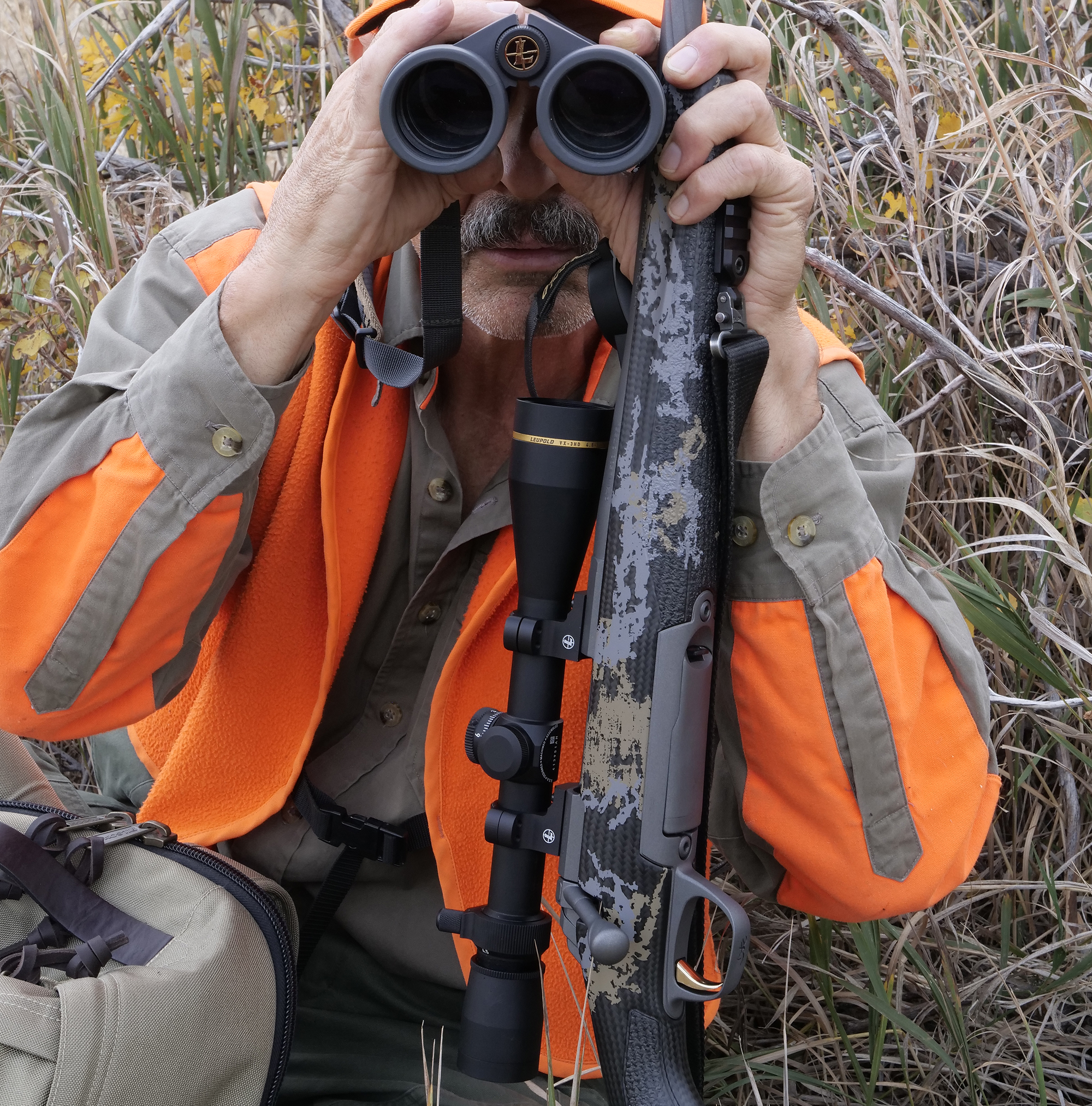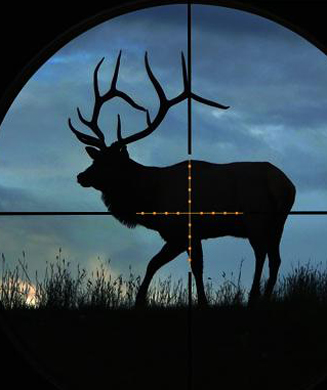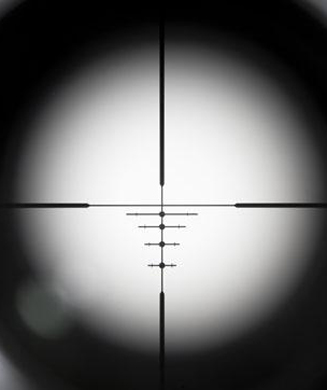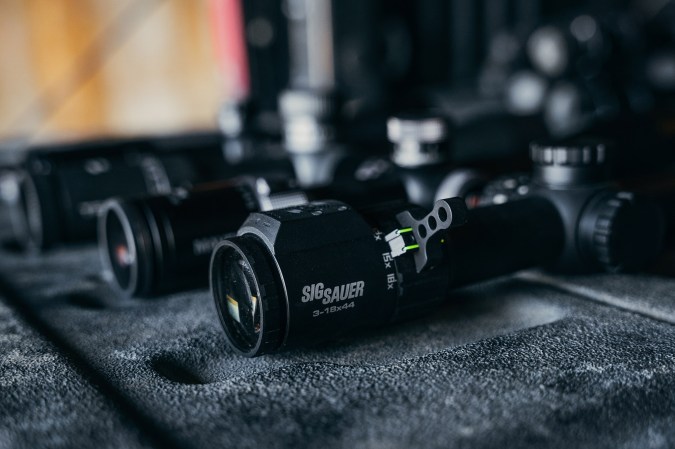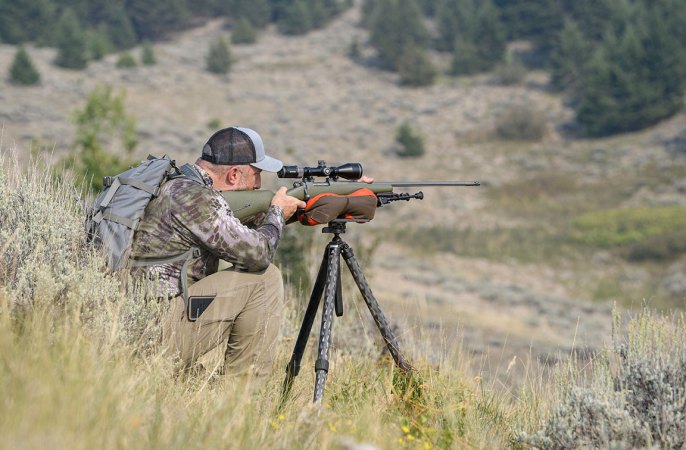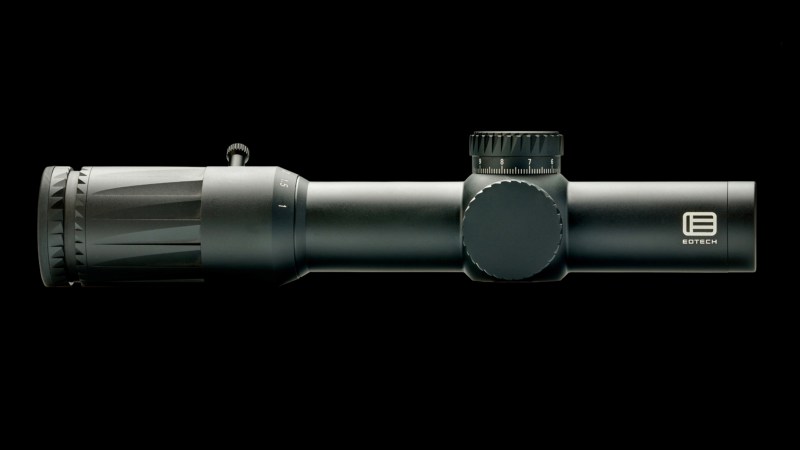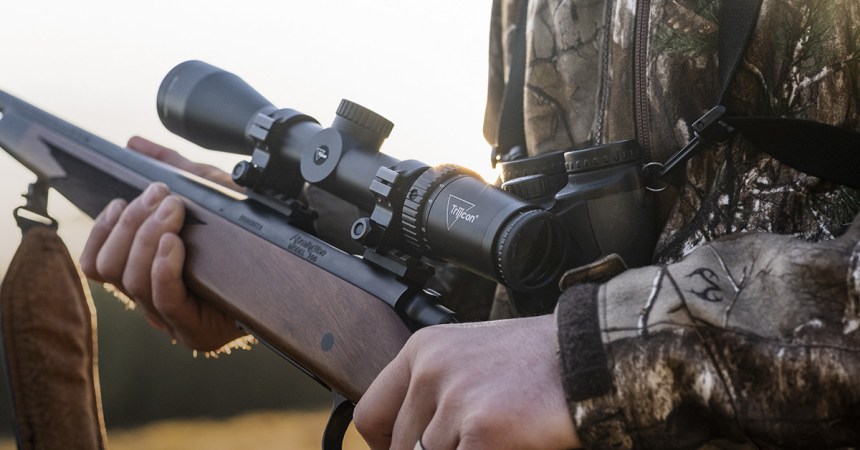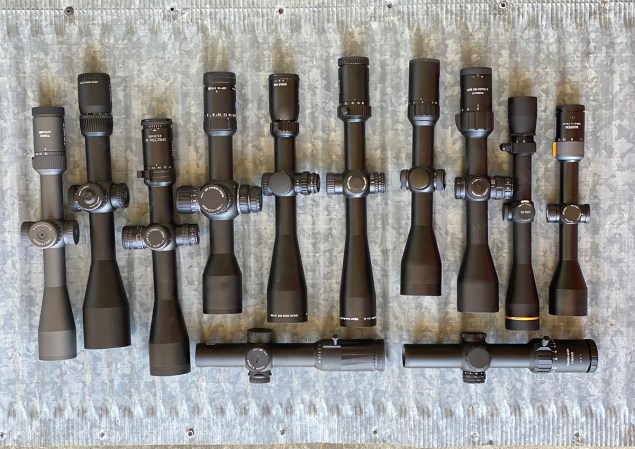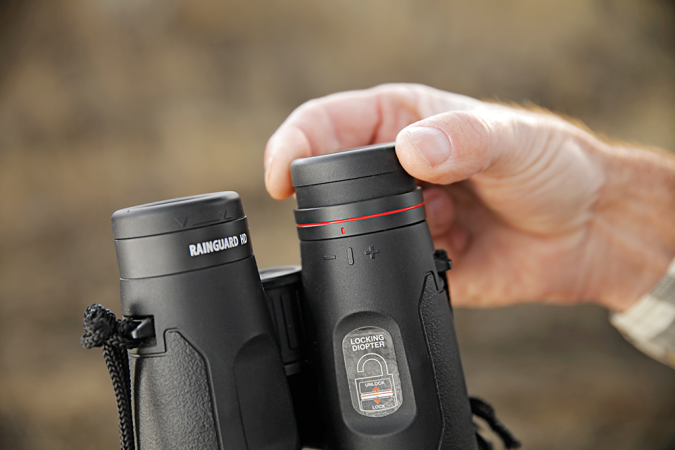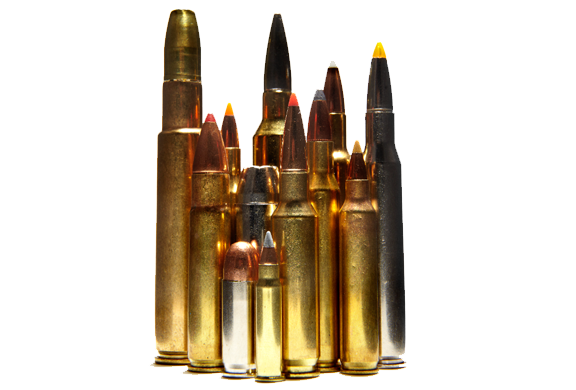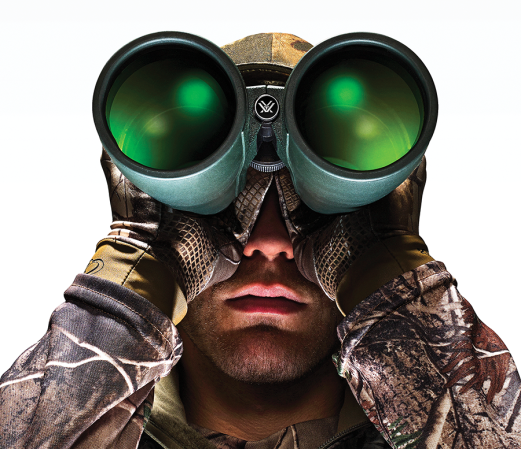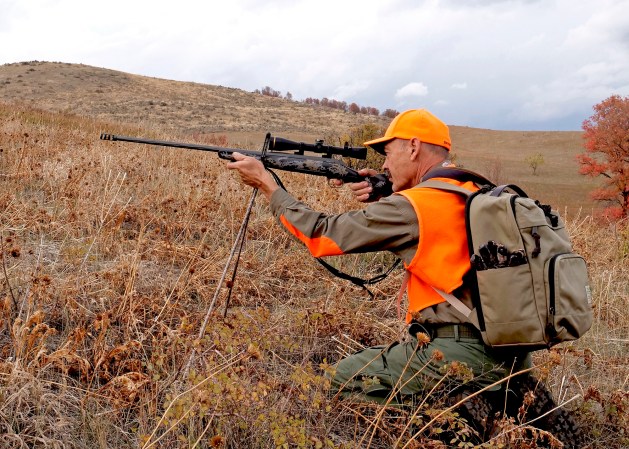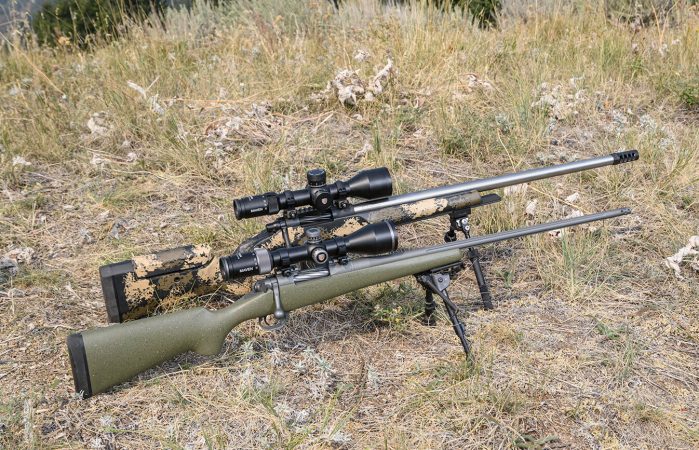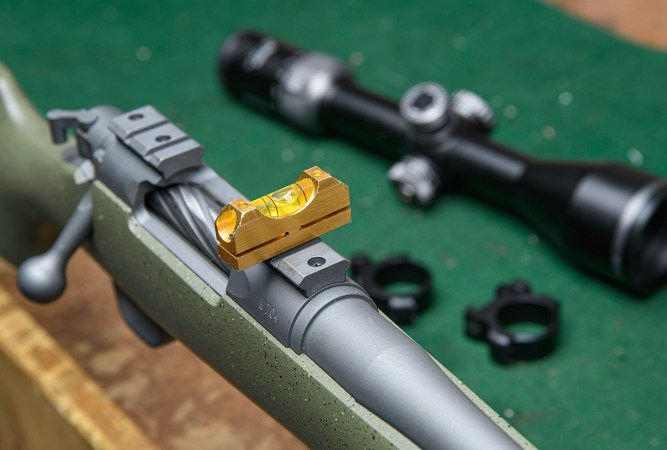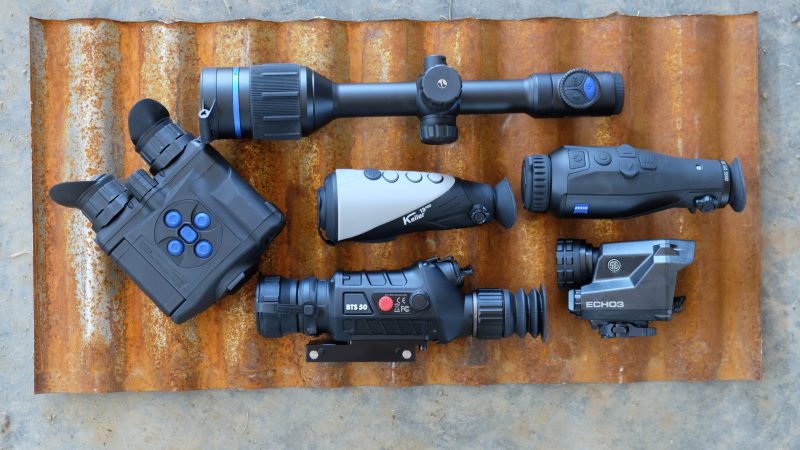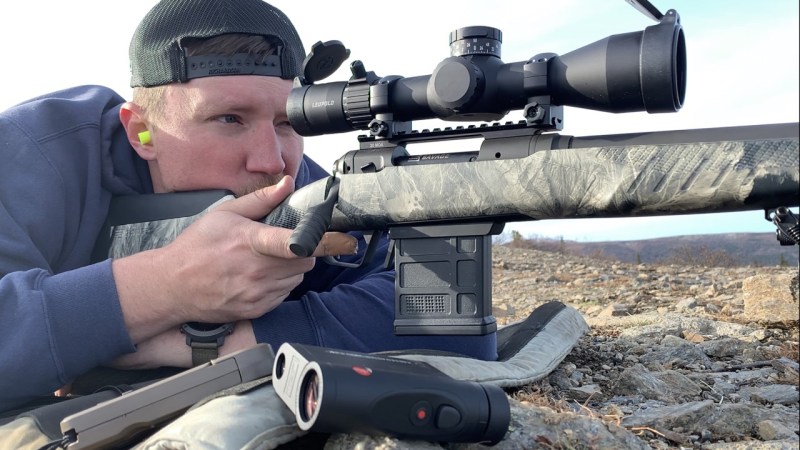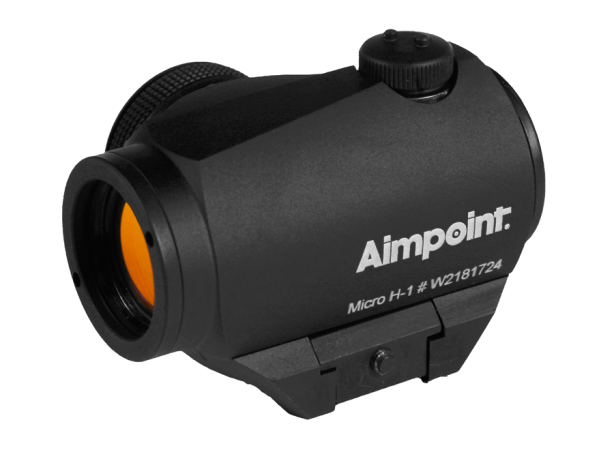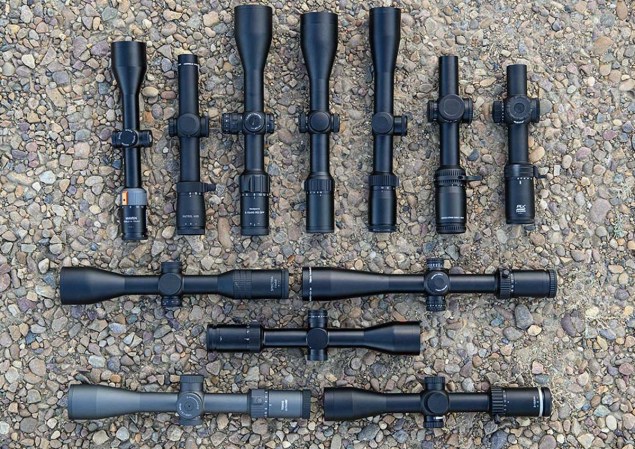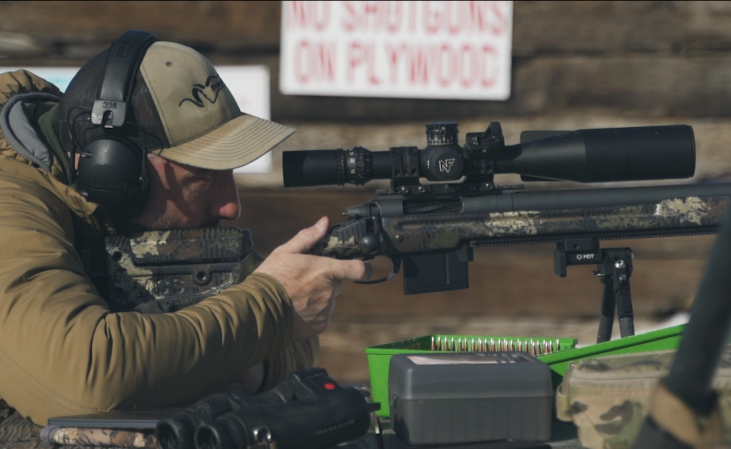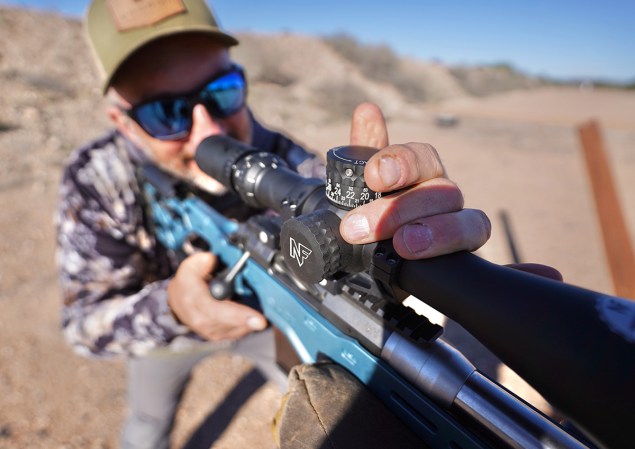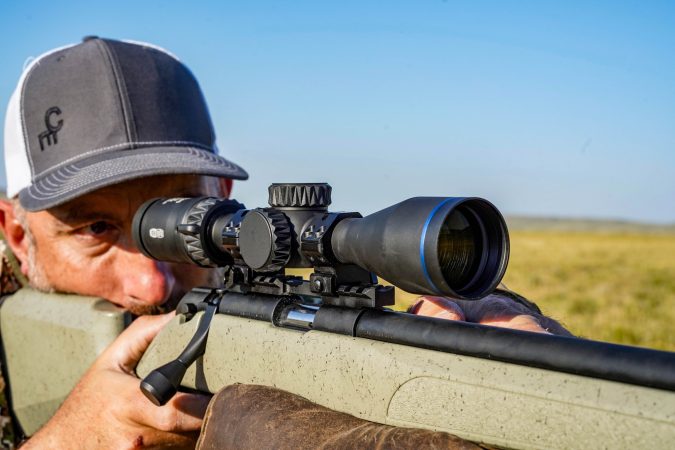We may earn revenue from the products available on this page and participate in affiliate programs. Learn More ›
Unless you intend to exclusively hunt dark timber, you’re going to want a scope on your western big-game hunting rifle. Here I’ll go through my process for choosing the best all-around hunting scope to go with my ultimate western big-game rifle and cartridge.
A good scope magnifies the target, sharpens it, appears to brighten it, and keeps it and the reticle precisely focused. But that doesn’t mean riflescopes are without flaws. They add weight, bulk, and expense. They can unbalance a rifle and snag brush. They have a nasty habit of fogging over just when the big buck stops in the open. Sometimes they leak, sometimes they fail to hold zero. And sometimes we forget we’ve left them set at 15X. That’s usually when our bull elk rises from its bed 30 yards away. Or we fire at a slam-dunk 150-yard buck and shoot over it because we left a turret dialed for a 400-yard shot.
All of this leads to our starting point for selecting a scope for our all-around western big game rifle: KISS. The fewer the bells and whistles, the less chance things go wrong. Let’s prioritize a scope’s job:
1. Hold zero. If the reticle doesn’t always point where the rifle is throwing its bullets, its useless. This is part of rugged durability. Reliably tough is job #1, and that includes precision adjustments, plus, being waterproof and fogproof.
2. Project a clear, bright image of target and reticle. You want to be able to see a clear image of your target during lowlight conditions when game is most often moving. This means optical quality, which encompasses image sharpness, brightness, and contrast.
3. Be portable, convenient. My ideal scope would stand about an inch high, stretch an inch long, and weigh an ounce. Unless I could get a smaller one. Since this kind of micro riflescope hasn’t been invented yet, I’ll go with the lightest, lowest-profile I can get with moderate power and objective lens size.
4. Easy to operate. We’re hunting, not trying to win a target competition.
Many popular scopes do all the above except #3 and #4. Unless you’re more interested in a challenging workout than hunting, you probably don’t want to drag a 2-pound scope up and down the Rockies. I’ve done most of my western hunting with scopes weighing 10 to 14 ounces. Not only are these easier to carry, but they’re potentially more rugged and durable. Two pounds doesn’t sound like much, but add it to a seven- to eight-pound rifle and throw in 10 miles of hiking per day and those ounces add up. More on this later. Right now, let’s tackle our priority list.
Holding Zero
Of course, holding zero is critical, but how can we identify scopes most likely to do this? Price is one way. There’s no guarantee one scope costing twice as much as another will be twice as dependable, but it’s a strong hint. The most expensive scopes are usually built with the finest ingredients to the finest levels of workmanship. But mid- to low-priced scopes can also be dependably durable. Test them out in the store. Does the scope feel well-made? Do the turrets have positive clicks when you turn them, or do they feel flimsly? Pay attention to brand reputation. Some brands are renowned for durability. Strong lifetime guarantees also hint at durability.
Recoil is one guaranteed challenge your scope will have to sustain. During recoil, the erector tube inside a scope shakes against the springs pushing it against the windage and elevation turrets. The harder the shake, the more likely something breaks. Springs also weaken over time. Zero begins to wander. Galling between contacts can also compromise reticle/zero settings. Those times you dialed 2 MOA correction and your bullet landed at the previous zero? The erector tube was probably sticking.
One rule I’ve found over time is that the bigger the scope, the more likely it is to break. This is due to inertia. During recoil, big, heavy lenses put a lot of pressure on mounts, screws, and glues. A corollary: the more complicated the scope, the more likely it will break. Illuminated reticles, parallax adjustments, dialing turrets, canting alerts, on-board computers—that’s a lot to go wrong. Today’s high-quality variable scopes are impressively tough and dependable, but fixed-power 4X or 6X should be the toughest of all.
Waterproof, fogproof, and dustproof are essential. Rain, wind, snow, freezing, heating, falling into creeks—this is a hunting scope, not an astronomical telescope. It’ll take some abuse.
Power, Brightness, and Objective Lens Size
Resist the “celestial observatory” sales pitch. You do not need to see the moons around Uranus. Power can be overdone. So can brightness. Most of us can’t tell the difference between 94 percent light transmission and 88 percent. More important is resolution or sharpness, but even this is a bit overrated. Sure, I prefer perfect resolution, but I’ll admit I’ve easily found, targeted, and hit game animals with some pretty “soft” scopes (but never ones that couldn’t hold zero).
Scope brightness is not just about big objective lenses. Yes, those let more light in, but magnification limits the light that gets out. Divide objective lens diameter by power to get the diameter of the exit pupil (EP.) This is the circle of light you see in the eyepiece held at arm’s length. It should match or exceed your pupil’s diameter. That beam of light pours through your pupil to your retina. EP smaller than your pupil costs you brightness. EP larger than your pupil bounces off your iris, but the extra rim of image minimizes edge blackout, too, so it has value.
A 50mm objective at 10X is 5mm across. That’s about your pupil’s dilation about a quarter hour after sunset. By the end of shooting light it might open to 6mm. You can open your scope’s EP to match by turning down the power. At about 8X that 50mm objective will project a 6mm EP. But a 40mm objective will project a 6mm EP too. You just have to turn magnification down to about 6.5X. A 40mm objective at 5X is 8mm. That’s about 1mm more than your pupil can dilate in total darkness.
More critical than objective diameter are anti-reflection coatings. Raw glass reflects about 4 percent of light that strikes it. Many scopes have ten lenses. They could lose 40 percent of the light. Microscopic layers of anti-reflection coatings can reduce this reflection loss to as little as 0.2 percent per lens. Look for scopes advertised as fully multi-coated. I’ve found these bright enough to clearly see black reticle against deer, elk, even black bears right through legal shooting light and often as late as an hour after sunset through a 4mm EP. That’s at 10X with a 40mm objective.
ED or HD lenses don’t increase brightness, but they can improve resolution by minimizing color fringing, a soft, colored fringe of light around the sharp edges of objects like antler tines and deers’ ears. In my experience, ED glass doesn’t really begin to make an appreciable difference until power reaches 15X.
As for power, at 10X images appear to be ten times closer. A deer at 100 yards looks the size of one at 10 yards to your naked eye. You could hit that with a rock. A deer at 1,000 yards would look as if it were just 100 yards away. Remember that hunters have shot deer at 100 yards while using plain iron sights for at least 200 years. Even in the open country of the West, you should rarely need to shoot beyond 400 yards. I’ve used 7X scopes to target sheep at 350-, 400-, and 450 yards. Two were one-shot kills. I took a 325-yard ram at 3X — one shot.
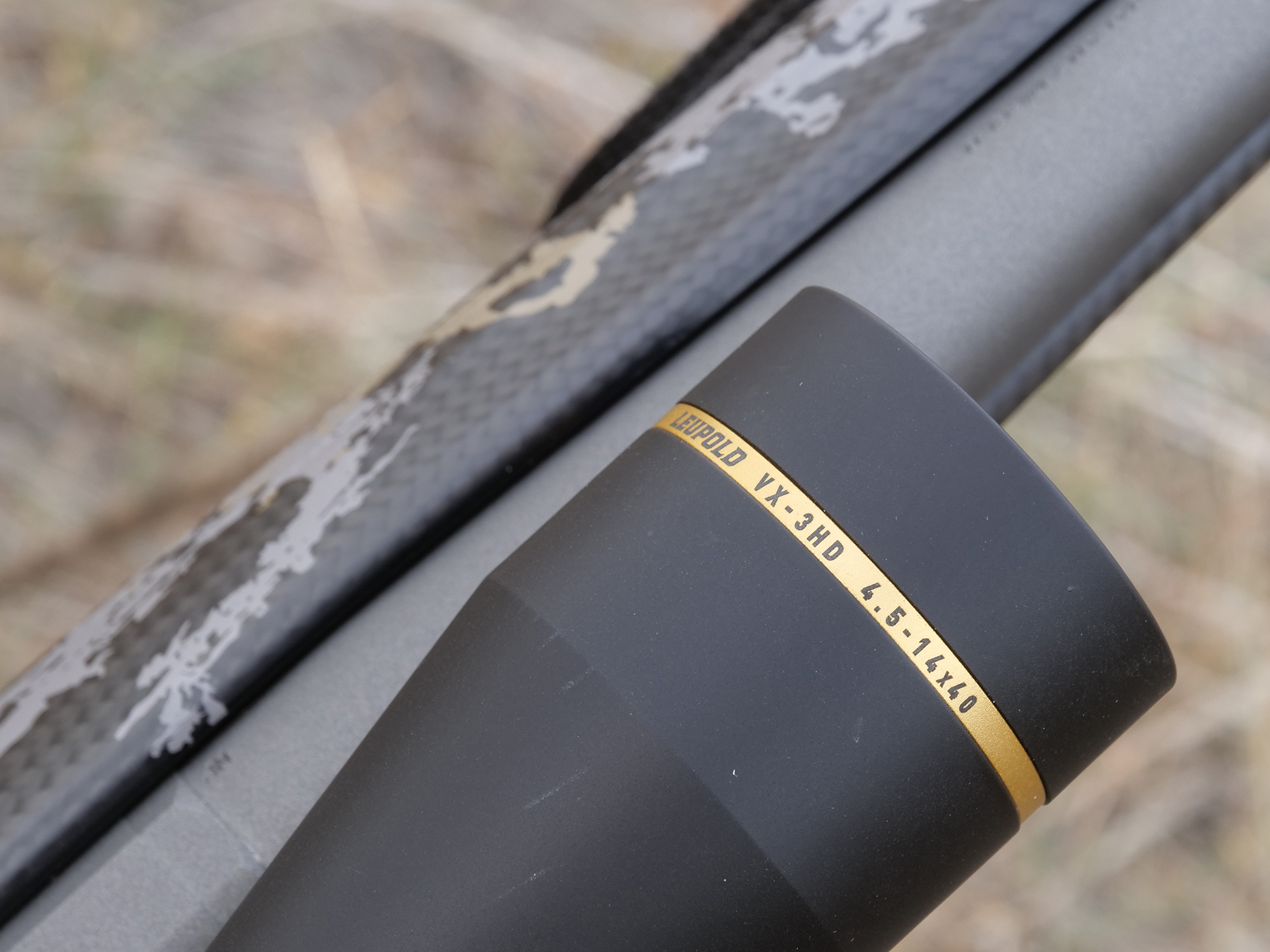
Why do you even need the lower powers like 3X? For those heavy-cover, close shots. Elk in timber. Whitetails in thickets. Low power means wide field of view. But this is overstated when hunters claim they were so close they could see “nothing but hair!” To counter these claims, I just scoped a big buck shoulder mount ten yards away at 5X and it fit brisket to backline with a few inches to spare. At 3X there was room for two deer stacked one atop the other. Try it for yourself. Don’t feel as if a 2X is mandatory.
Some of us do gain confidence with more magnification. So pushing the upper limits beyond 10X isn’t ridiculous, especially if a variable scope offers 5X, 6X, or 8X magnification range at no major increase in bulk and weight. A 3-12X, 3.5-18X, or 4.5-14X are all great options.
Pick a Portable Hunting Scope
You have to carry it. Up and down. For miles. For days on end. I’ve seen more than one western hunter collapse in camp after two days in the mountains. They were all dragging too much scope and rifle. The less you carry, the longer you hunt. So, if you can find a 13-ounce scope that does what you need, why play mule to a 30-ounce one?
First, understand that 30mm main tubes are not brighter than 1-inch tubes. Brightness results from objective diameter and magnification enhanced by anti-reflection coatings. Maximize those and 30mm changes nothing but adjustment room for dialing. Many 30mm scopes are built with the highest quality parts, so they usually look brighter because of that, not the tube diameter.
Second, understand that you don’t get more field of view with a huge objective. FOV is more a product of eyepiece lens design and eye relief. FOV in a scope is usually overrated anyway. By the time you’ve found your bull and are lining up the shot, you don’t need to see half a football field on either side of him. You need to see the sticking place and put the reticle on it. FOV at close range is useful, but dial power down to 3X or 4X and you’ve got huge FOV.
If you can find a 30mm scope at a weight you like and it meets your other requirements, go for it. I’m sticking with a 1-inch scope. The Leupold VX-3HD 4.5-14×40 CDS is nearly a half-pound lighter than the 30mm.
Simple Hunting Scopes
For real-world hunting scenarios, you don’t need a scope that requires a computer to operate. A buck or bull inside shooting range tends to slam all the doors leading to your brain’s command and control center — especially the one in charge of numbers. Most western big-game shooting situations go something like this: You hustle up a steep ridge, quickly find a place to sit down, and then steady a reticle on a big buck’s chest before he steps into the trees 250 yards away. You don’t want to be doing math in that moment (or at least I don’t).
The less you have to think and adjust, the less chance you’ll screw up. Been there done that. Consider a Maximum Point-Blank Range zero. With my Browning Mountain Pro in 6.8 Western and Winchester’s new 162-grain Copper Impact bullet at 2,870 fps I can zero for peak trajectory 3-inches high at 150 yards and get to 300 yards before that bullet drops 3 inches. With a simple center-chest hold I’ll hit the vitals from muzzle to 300 yards without needing a precise range reading. Should I have time to read range and discover it’s beyond MPBR, I’ll likely have time to dial the correction. Leupold’s Custom Turret makes that ridiculously easy.
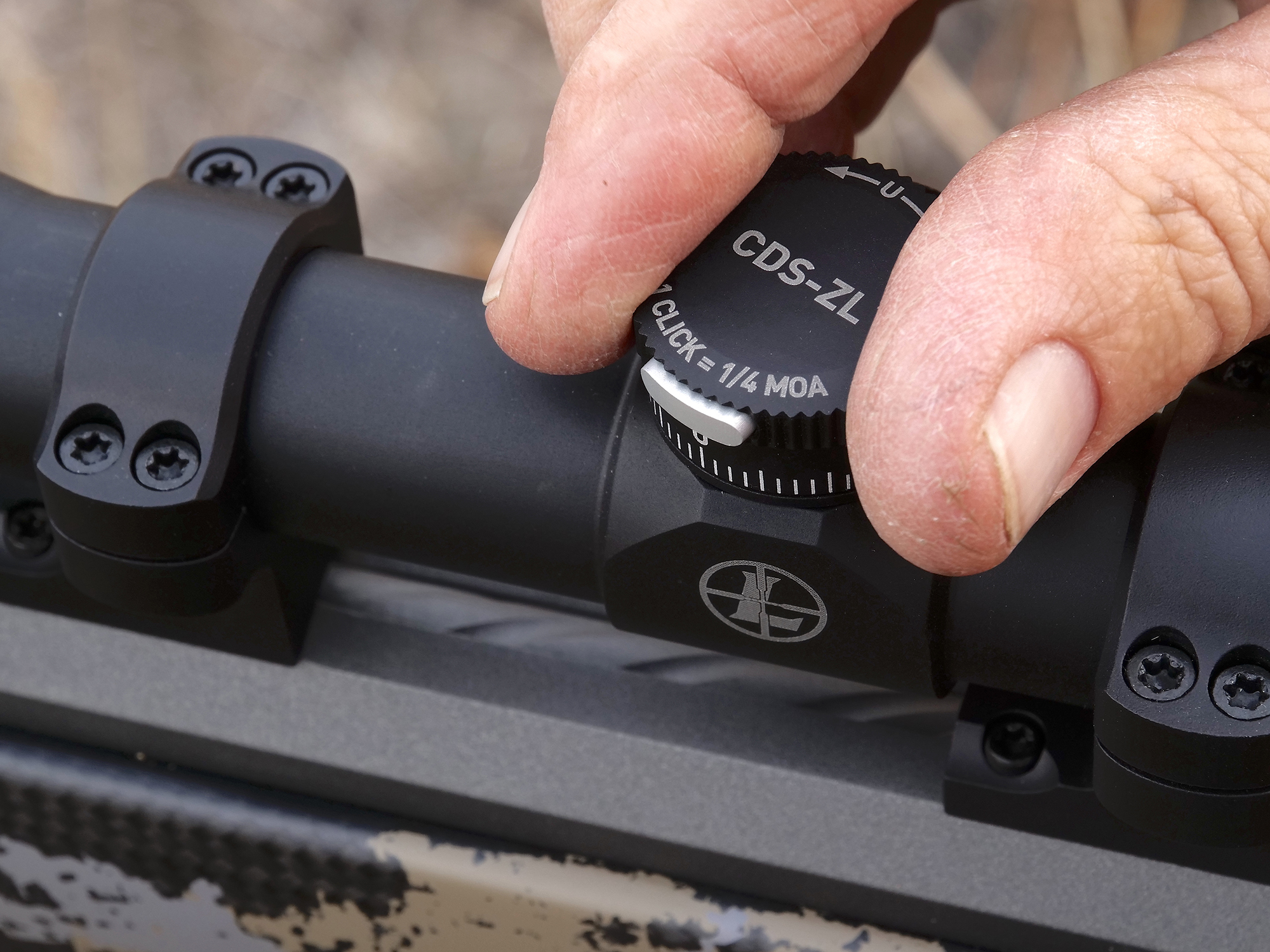
A custom dial is marked with precise distance points for your load. No need to translate MOAs or MILs. Dial to 4 for 400 yards, 4.5 for 450, etc. The only issue then is changes in atmospheric pressure. Lower air density at elevation reduces drop. You might want custom turret caps for two different elevations and/or temperatures. But run some ballistic charts and you’ll discover that 3,000 feet up or down doesn’t change drops by much more than an inch at 500 yards, suggesting that a middle elevation turret (ballistic data at 4,000 or 5,000 feet) could suffice for most hunting. If you go above 8,000 feet, you might want a high elevation turret made.
When selecting reticles, I recommend 2nd focal plane, the kind that does not change size with magnification. This style is much easier to see at all times. First Focal Plane reticles can get so small at lower magnifications that they can be tough to see against cluttered backgrounds. With 2nd focal plane reticles, your sub-tensions are legit at specific powers only, usually the top power. But that’s okay because with the system I described above, you’ll simply dial for longer shots.
Bells and Whistles
Other than these four major categories, there’s not a lot left to consider but bells and whistles like reticle style and parallax adjustment dials. Parallax control is important for critical, pin-point targeting at long range but usually not required for hunting and targets as large as a deer’s vital zone. What parallax dials do is precisely focus the scope on your target. This eliminates any chance that aiming with your eye off perfect axis with the scope will result in shifting bullet placement by an inch — or several.
Finally, hard exterior lens coatings minimize fogging and scratching to increase function and durability.
A Final World on Riflescopes for Western Big Game
These are the critical things to consider when choosing a hunting scope. I know they don’t match up with the popularity of large, heavy, complicated scope design and operation these days, but those are primarily target scopes that offer few advantages for hunters. Macho young men and women might rightfully take pride in easily roaming the wilds with 2-pound scopes, but I’ll bet dollars to donuts they’ll gain no advantage from that bulk and weight. The sheep, mountain goats, mule deer, whitetails, pronghorns, elk, moose and bears on my office walls hang in testimony to the reliable performance and efficiency of smaller, lighter, simpler hunting scopes.
Previous Articles in the Hunt the West Series
How to Pick the Ideal Rifle for Hunting Big Game in the West
How to Choose the Best Cartridge for Hunting Big Game in the West
